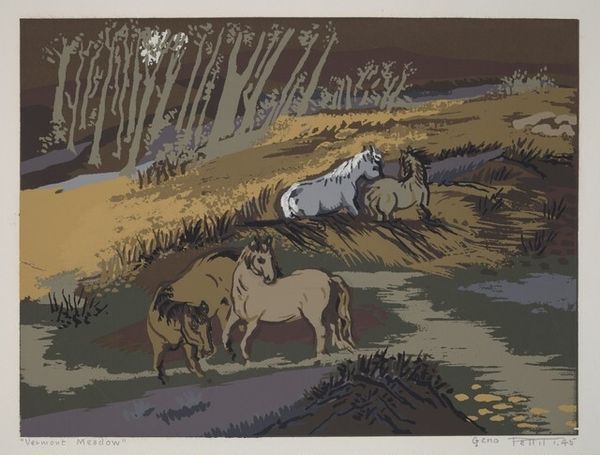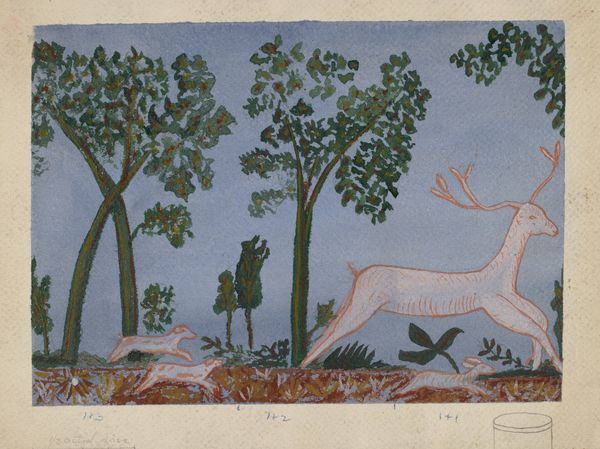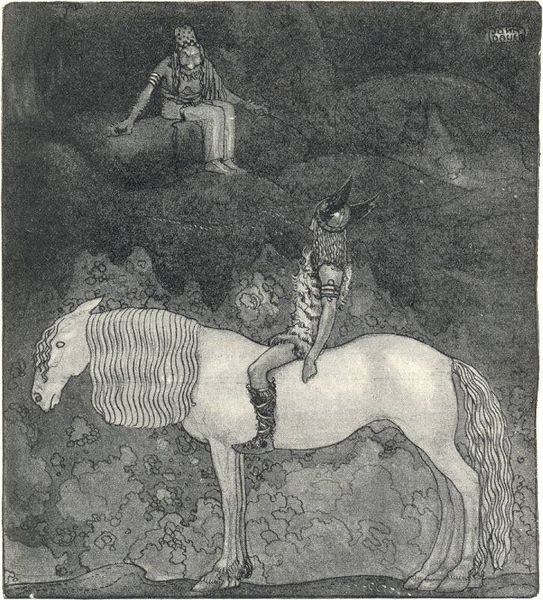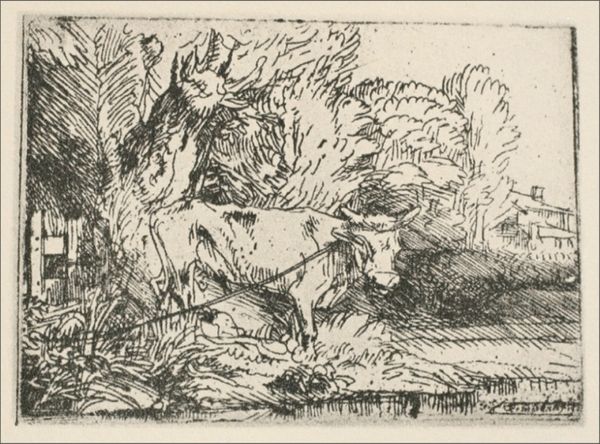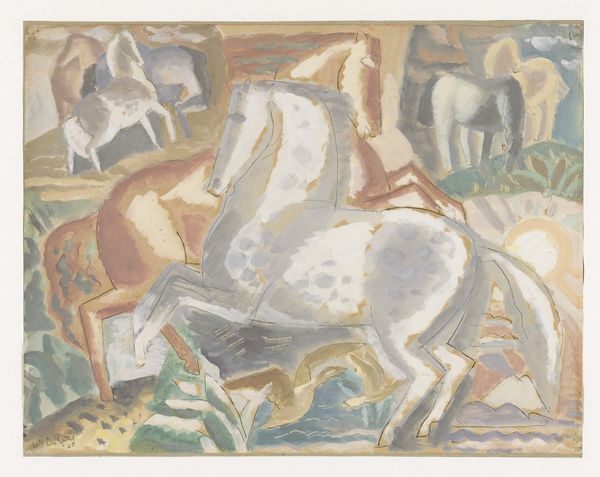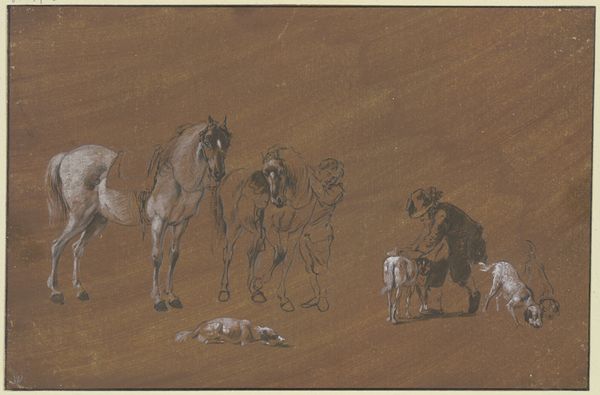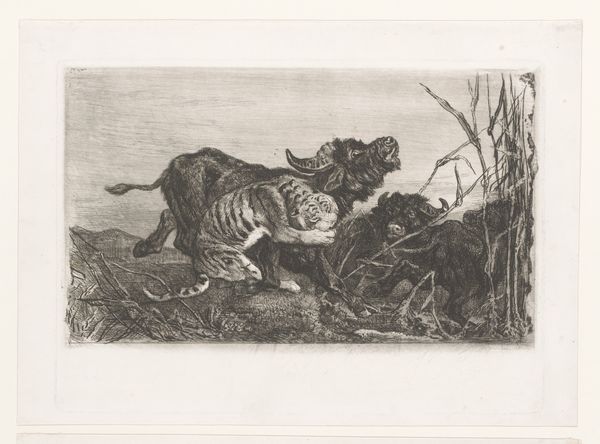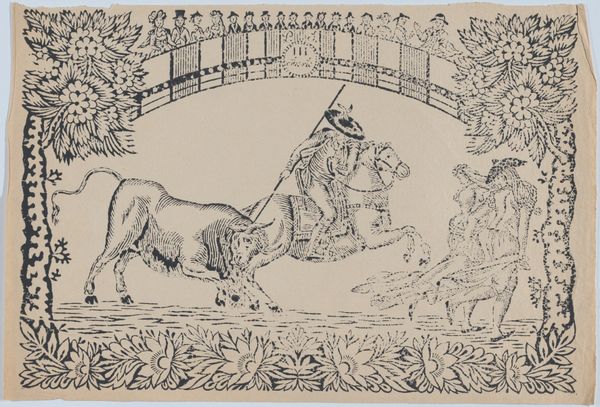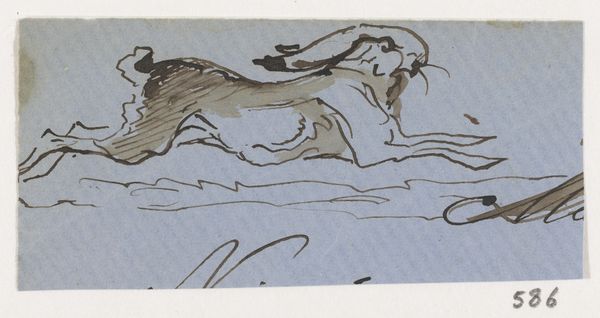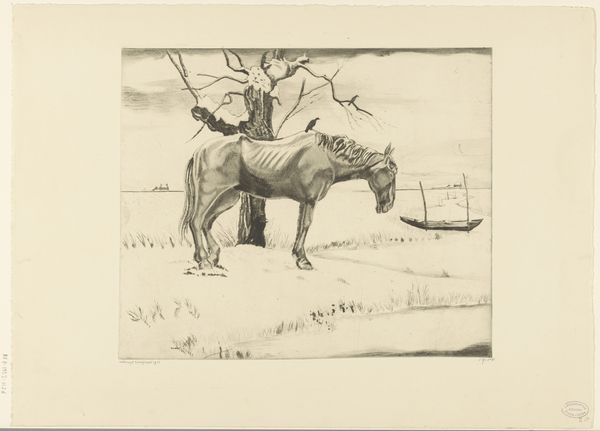
print, woodblock-print, woodcut
# print
#
landscape
#
figuration
#
woodblock-print
#
woodcut
#
naive art
#
modernism
Dimensions: Image: 280 x 360 mm (11 x 14 3/16 in.) Sheet: 300 x 410 mm (11 13/16 x 16 1/8 in.)
Copyright: National Gallery of Art: CC0 1.0
Curator: Here we have Guy MacCoy’s woodcut, "Three Trees and a Low Sky," created in 1943. The scene presents a lone horse set against a dynamic landscape. Editor: My immediate impression is one of tension. There’s this quiet, earthy scene threatened by an ominous sky, the horse looking like it is in mid-flight. Curator: Absolutely. MacCoy's choice of the woodcut technique itself brings a sense of starkness to the scene. The carving and printing process lends itself to bold contrasts and textures. Note how the grain emphasizes the wild, windswept hill and the ominous weather. It evokes a very tactile sensation. Editor: How does this process impact our reception to the work? Were printmakers like MacCoy trying to address issues related to the art world during the Second World War? Curator: That's a very insightful question. Remember this print was made during the war when resources were being diverted. Printmaking became an accessible method to produce and distribute artwork, as the materials are more affordable and widely accessible. It democraticizes artistic production and consumption during a time of rationing and material scarcity. Editor: So the act of choosing this medium and these readily-available materials, like the paper and the ink, speaks to a different kind of artistic agency, moving art beyond the gallery setting? Curator: Precisely! Now consider the themes. This image, in its relative simplicity, also presents a clear landscape—a vital American theme that resonates during wartime. Editor: It seems significant to depict the horse as independent of any labor or farm context during this period of uncertainty and crisis. Curator: The lone animal embodies a type of wild spirit, resisting the disruption of societal change by standing solitary and determined against the atmospheric tumult. Editor: Thinking about this piece from both a historical and material lens offers so much nuance. Curator: Indeed. MacCoy's choice of materials intertwines with the narrative and invites viewers to examine not only the visual story but also the means of its creation and consumption.
Comments
No comments
Be the first to comment and join the conversation on the ultimate creative platform.
